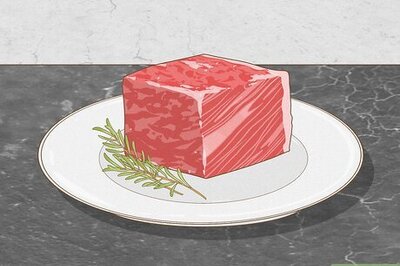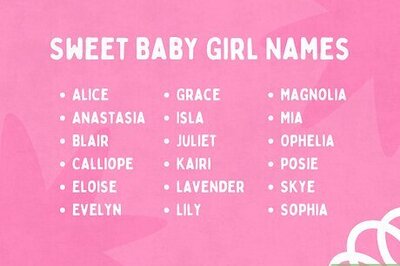
views
New Delhi: Finance Minister Pranab Mukherjee will try to ease inflation-hit voters' pain with a budget heavy on spending for food, fuel and fertiliser subsidies, while selectively lifting taxes to meet fiscal targets.
Mukherjee, known to compromise on fiscal reforms to meet political needs, faces a tough time reining in inflation while keeping the economy on a high-growth path when he presents his annual budget for 2011/12 in parliament on February 28.
Last year, India rolled back about $10 billion of a $40 billion stimulus package implemented during the 2008 global financial crisis.
This year, the Congress party leadership is unlikely to make tough belt-tightening decisions. It is on the back foot over corruption scandals and faces elections in four major states.
Stubbornly sticky inflation in Asia's third largest economy, driven by food and other commodity prices, combined with a high fiscal deficit has prompted repeated calls from the central bank for fiscal consolidation.
However, New Delhi tends to bank on higher revenues rather than spending cuts, a formula that worked in the current fiscal year thanks to a windfall from the sale of 3G mobile bandwidth.
Below are some questions and possible answers that the finance minister faces over the budget:
Will India Further Trim Fiscal Stimulus?
Since Mukherjee wants to reduce the fiscal deficit to 4.8 per cent of gross domestic product in 2011-12 and 4.1 per cent in 2012-13, he is expected to continue a gradual rollback of the fiscal stimulus package unveiled during 2008 global crisis.
In last year's budget, he trimmed the package by raising factory gate duties on all major items to 10 per cent from 8 per cent and reimposing the taxes on crude oil, petrol and diesel that were withdrawn in 2008.
The government rolled out its stimulus package in three phases during 2008 and 2009 by cutting taxes and lifting spending on infrastructure to prop up demand.
Meanwhile, an effort to overhaul India's tax system has been deferred until next year, meaning Mukherjee may hold off on raising tax rates across the board and instead lift rates only for goods such as cars and commercial vehicles, while bringing more services into the tax net.
Will New Delhi Follow The Fiscal Consolidation Path?
Partially. Mukherjee could rely on a surge in domestic demand and global recovery to drive tax receipts to meet fiscal targets.
The Indian central bank, which has raised rates seven times since March to tackle high inflation, hopes the government moves towards fiscal consolidation in 2011/12.
The finance minister may also marginally lower government borrowings below this year's 4.47 trillion rupees ($98 billion) to show his commitment to fiscal consolidation, though he will not have the cushion of revenue from the 3G spectrum auction in the new year.
The government could raise up to 400 billion rupees from the sale of stakes in companies, partially offsetting a swelling food subsidy bill estimated at 700 billion rupees. A downturn in the stock market, however, has curbed investor appetite for new issues for the time being.
What Are The Options On Oil Subsidies And Duties?
The widening gap between international crude prices, now over $100 a barrel, and domestic retail prices of diesel, cooking gas and kerosene, could force Mukherjee to slash levies on imported crude and domestic petroleum products.
High inflation and upcoming state elections mean Mukherjee will not pass along the full impact of rising crude prices.
The oil ministry has urged Mukherjee to eliminate the 5 per cent customs duty on crude and reduce duties on petrol and diesel to 2.5 per cent from 7.5 per cent.
How Can India Curb Inflation Without Hurting Growth?
This is a major challenge. India wants its economy to grow at 9 per cent in 2011/12, up from about 8.5 per cent this fiscal year, even as inflation remains well above government targets, at 8.23 per cent in January.
More infrastructure would help ease bottlenecks. The Planning Commission, a government body, has recommended an increase of up to 20 per cent from last year's $38 billion budgeted for sectors including roads, ports, airports and railways, as well as for health and education.
Mukherjee may direct funds towards more production of milk, poultry, fish, vegetables and fruit, which have driven food inflation running at 11 per cent annually.
Will The Finmin Announce Major Reforms?
Probably not. The government is focused on blunting opposition attacks over a series of corruption scandals and may announce a broad parliamentary probe into the huge 2G spectrum scandal. At this time, it is unlikely to try anything controversial.
Mukherjee will therefore probably not announce any major economic reforms such as opening the retail sector more broadly to foreign investors or raising foreign investment limits in insurance, although some reforms may be announced later.
He may, however, announce the set-up of an infrastructure debt fund and initiatives to deepen the corporate debt market.
Will There Be Any Steps To Address The Current Account Gap?
The finance minister and central bank have expressed concern over the high current account deficit and the reliance on fickle short-term portfolio inflows to fund it.
More exports are needed, and the budget may include incentives for labour-intense export sectors such as textile, leather and wood products.
The current account deficit is on track to touch 3.5 per cent of gross domestic product this fiscal year, which the central bank governor has said is unsustainable.



















Comments
0 comment